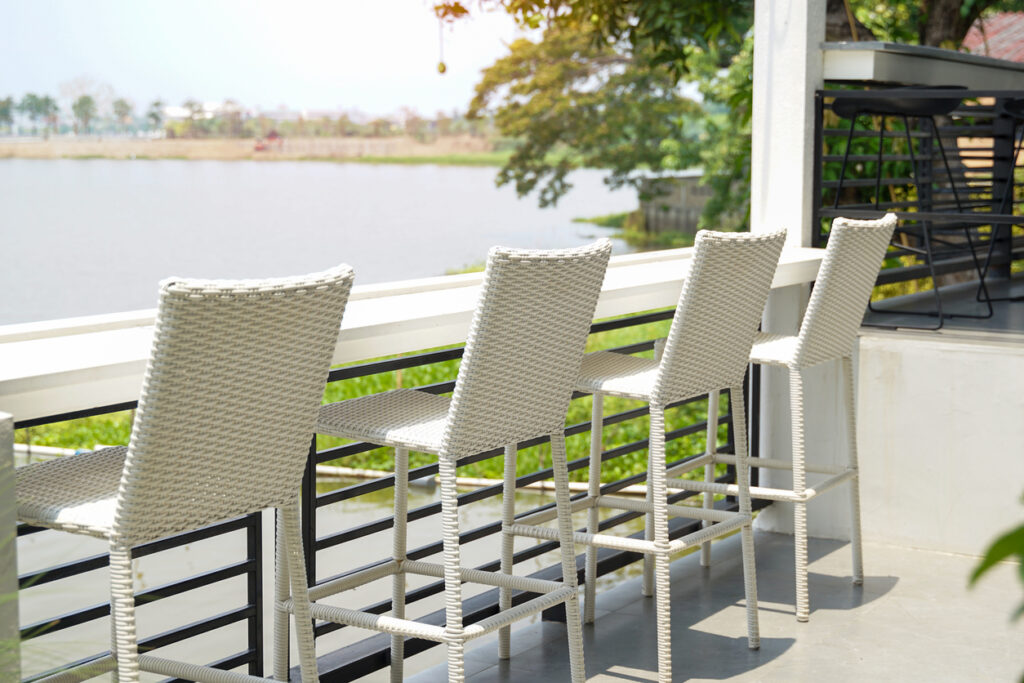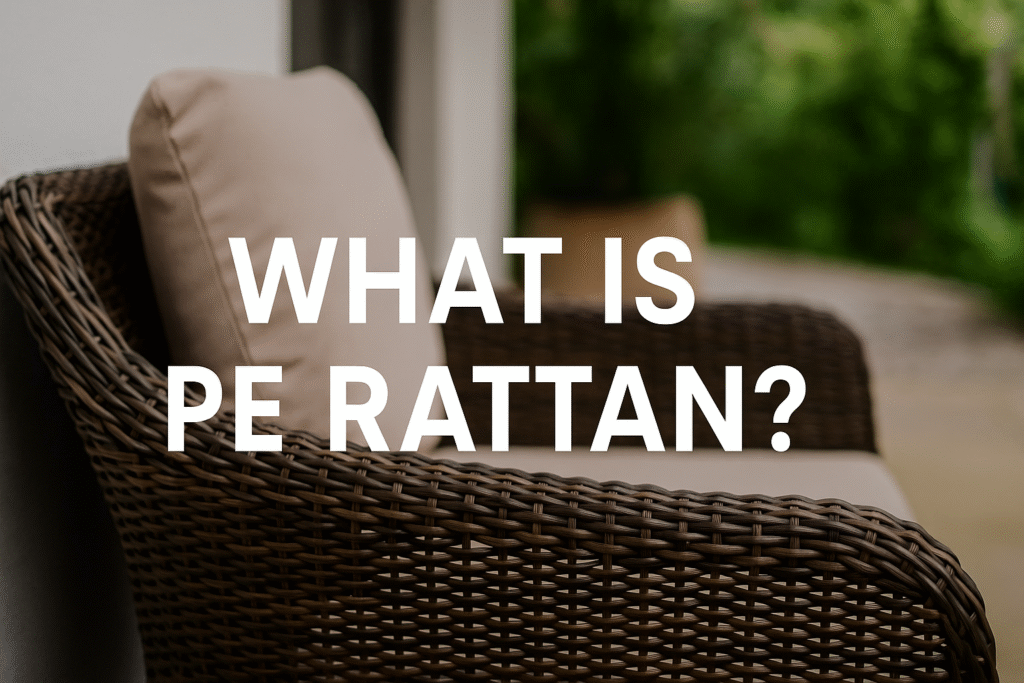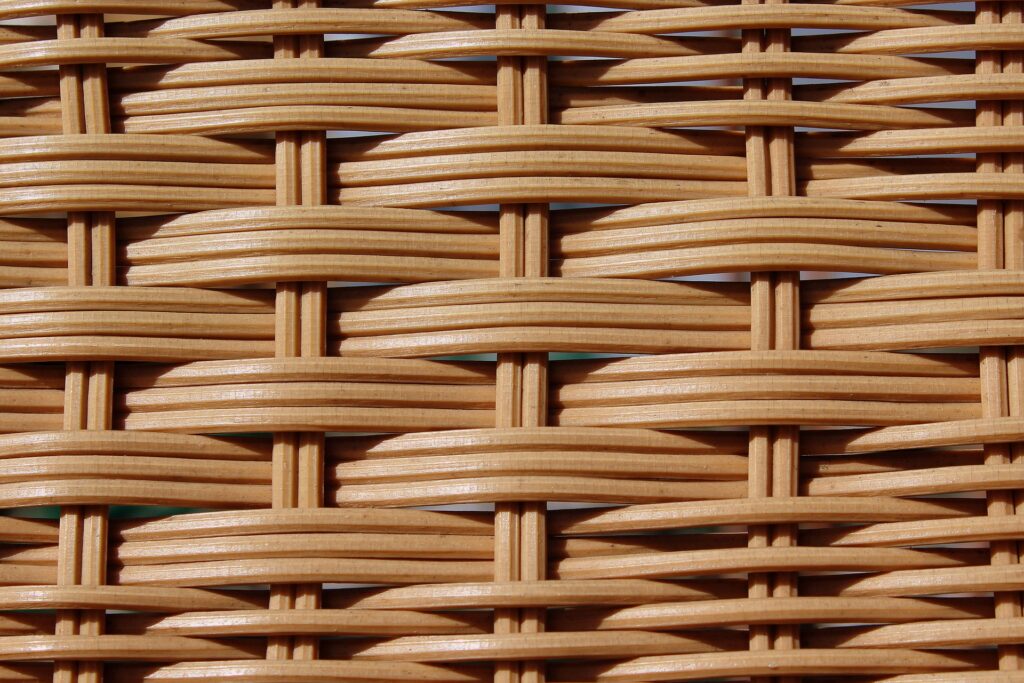When it comes to outdoor furniture, PE rattan is one of the most popular materials on the market. Durable, stylish, and versatile, it’s often mistaken for natural wicker, yet it offers unique advantages for modern outdoor living. Let’s dive into what PE rattan is, its benefits and drawbacks, and how to choose quality pieces that will last.
Other Names for PE Rattan
PE rattan goes by several names depending on the market and manufacturer. You may hear it referred to as synthetic rattan, resin wicker, all-weather wicker, or poly rattan. The “PE” stands for polyethylene, the high-quality, weather-resistant synthetic material from which it is made.

The Origin of PE Rattan
PE rattan was developed as a solution to the limitations of natural rattan, which, while beautiful, can be prone to damage from moisture and sunlight. Synthetic rattan first gained popularity in Europe in the late 20th century as outdoor furniture manufacturers sought materials that could withstand harsh weather while mimicking the elegance of traditional hand-woven wicker.
How PE Rattan is Made
High-quality PE rattan starts with premium-grade polyethylene. The material is extruded into flexible strands, which can be flat, half-round, or round in profile. Skilled artisans then hand-weave these strands around sturdy frames—often aluminum—to create durable and aesthetically pleasing furniture. The weaving process requires precision to ensure consistent tension, preventing sagging or warping over time.

Benefits of PE Rattan
- Weather Resistance – PE rattan resists moisture, UV rays, and temperature extremes, making it ideal for year-round outdoor use.
- Low Maintenance – A quick wipe with mild soapy water keeps it clean, with no need for oiling or sealing.
- Design Flexibility – Available in various weave patterns and colors, from natural tones to modern greys and blacks.
- Lightweight & Durable – Easy to move while strong enough to last for years with proper care.
Drawbacks of PE Rattan
- Heat Sensitivity – While UV-resistant, prolonged exposure to extreme heat can cause lower-quality PE rattan to soften or deform.
- Environmental Concerns – As a plastic-based product, it’s not biodegradable, although high-end PE rattan can be recyclable.
- Price Variability – Cheap imitations may look similar but lack the strength and longevity of premium-grade PE rattan.
How to Spot Quality PE Rattan
- Material Grade – Look for HDPE (high-density polyethylene) rather than PVC or low-grade plastics. HDPE is more durable, eco-friendlier, and weather-resistant.
- Frame Construction – Quality PE rattan is woven over rust-proof aluminum rather than steel, which can corrode.
- Weave Tightness – Even, consistent weaving indicates skilled craftsmanship and better durability.
- Warranty & Brand Reputation – Established manufacturers often offer multi-year warranties for their products, reflecting confidence in quality.
Final Thoughts
PE rattan combines traditional aesthetics with modern performance, making it a favorite choice for outdoor furniture worldwide. If you want furniture that can handle the sun, rain, and everyday use without losing its charm, investing in high-quality PE rattan is a smart move.
At CG Outdoor, our PE rattan furniture is crafted with high-level PE materials and hand-woven by experienced artisans, ensuring both style and durability for years to come.



